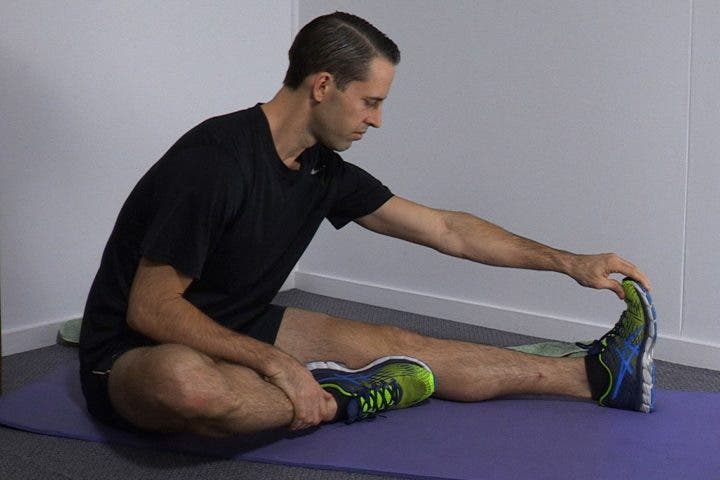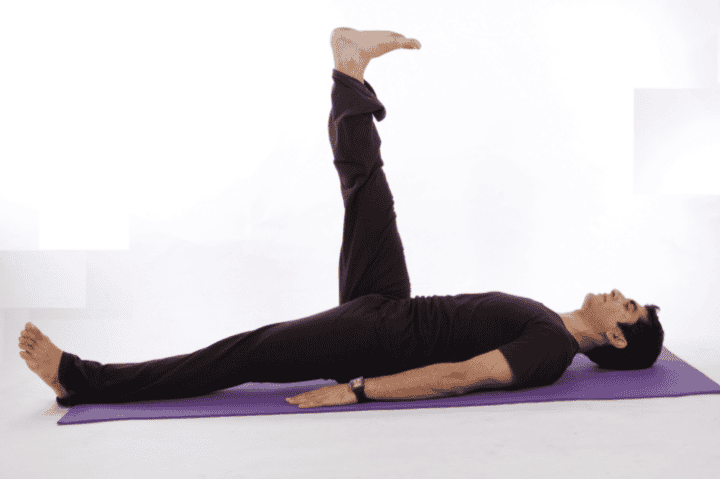The hamstrings are muscles located in the thighs with insertion in the pelvis, in an area that many also identify as the hamstring. If you haven’t heard of them, it’s time you started to become aware of it.
To give you a more graphic idea of the role of these muscles, it is best to use an example: when you try to reach up to touch the balls of your feet, do your hands manage to reach there or only just below the knees? Well, if your answer is the second one, it is a serious sign that you need to do a few mobility exercises and stretches that allow you to increase the flexibility of your hamstrings .

How do you test your hamstring flexibility?
Most people in sedentary jobs tend to end the day feeling stiff in their back and legs. The hamstrings play an important role in this, and a simple elasticity test can show you just how serious the issue is.
The goal of this test is to assess the stretching ability of the nerves and muscles in your lower back and rear thigh (where the hamstrings are). To run it correctly, follow these steps:
- Start by lying on the floor on your back, with your back straight, your arms at your sides, and your legs straight and extended.
- Raise one leg as high as you can, but always keeping it in a straight line, that is: without bending the knee or ankle.
- Record yourself or find a person to watch you while you perform the exercise, to see if you manage to raise it above 70 °.
- If your leg does not reach at least 70 ° (and you have no recent injury) it is a sign that your hamstrings are stiff , and that they need to be stretched.

5 exercises to increase hamstring flexibility
1. Fence stretch
Depending on your flexibility, you can perform this exercise sitting or standing by resting your foot on a fence or other surface.
- Start (standing or sitting) leaving one leg behind while stretching the other forward in a straight line in front of you.
- Lean forward from your hips, pressing down on your glutes and trying to bring your belly button as close to your knee as possible.
- Hold the sole of the foot with both hands, exerting slight pressure towards you. Do not bend from the spine to reach the feet.
- Hold the pose for about 30 seconds and then switch sides.
- Perform three repetitions of the exercise on each side.
2. Advanced proprioceptive neuromucular stretching
The proprioceptive neuromuscular facilitation stretch (PNF) mixes muscle contraction and relaxation in a demanding way, capable of really improving the flexibility of your hamstrings.
- Start on your back, raising one leg at a 90 ° angle and keeping the other down.
- Increase the stretch by holding the leg from the sole of the foot with a strap, the ends of which you will hold one in each hand, applying pressure so that the leg bends slightly towards you.
- Hold the position for 3 to 10 seconds, depending on your endurance. Relax a bit and then repeat again.
- Do the exercise about three times on each leg.
3. Squat and hip stretch
For this exercise you will need a cane or plastic support tube. On the other hand, it is important that as you perform more and more exercises, you increase your stretching range: experts indicate that the flexibility provided by stretching exercises lasts, immediately, at least 6 minutes, so take advantage of it.
- Execute 3 series of 10 traditional squats or squats, interspersing in each series 10 hip stretches, supporting yourself with the support cane.
- For stretches, you will place the tube on your back, holding it with one hand at each end, to help keep the spine in a neutral position.
- It is important that in stretching, your back is kept straight, and you get as low as you can without bending at any time.
4. Leg stretch with compressed abdomen
For some people, applying moderate weight to one muscle area can help their other muscles, such as the hamstrings, to let go more easily. To test this, you can perform the leg stretch test at the beginning with a little weight.
- Start by executing a straight leg stretch like the one we mentioned at the beginning, measuring your results. Then do the same movement, but this time put a weight on the arm opposite the leg you are lifting.
- The weight should be relatively challenging to put some pressure on your abdominal muscles, but not enough to make it too difficult for you to exercise.
- If even holding the weight your leg does not manage to increase its ability to stretch, you may have a neuromuscular control problem . This problem can be remedied gradually by increasing the strength of the abdomen, which will result in greater control of your spine over the functions of stretching and contracting the muscles.
5. Kettlebell deadlift
Any exercise that involves a hip bend is ideal for gradually increasing the flexibility of the hamstrings , without the need to attack them aggressively.
- To perform the deadlift, you should start by holding a kettlebell or kettlebell between your spread legs (holding a dumbbell also works).
- From this position, push your hips back until you feel the stretch in your hamstrings. Your spine should remain straight and your ankles and knees should remain straight at the end of the stretch as well.
- Return to the starting position with pressure from the soles of your feet. When you get to the top, apply light pressure with your buttocks.
- Perform about 3 sets of 10 reps each.
Reference
- Kenneth Leung. Top 5 Exercises to Improve Hamstring Flexibility. For BuiltLean. [Revised January 2017]
